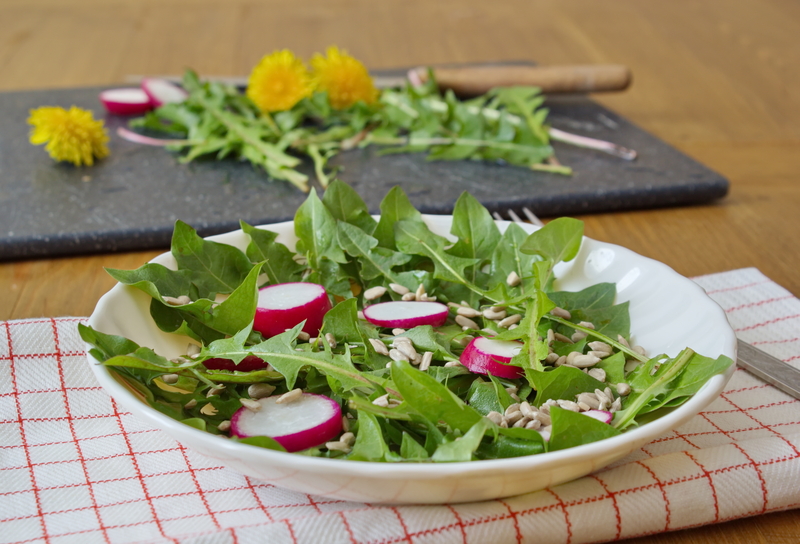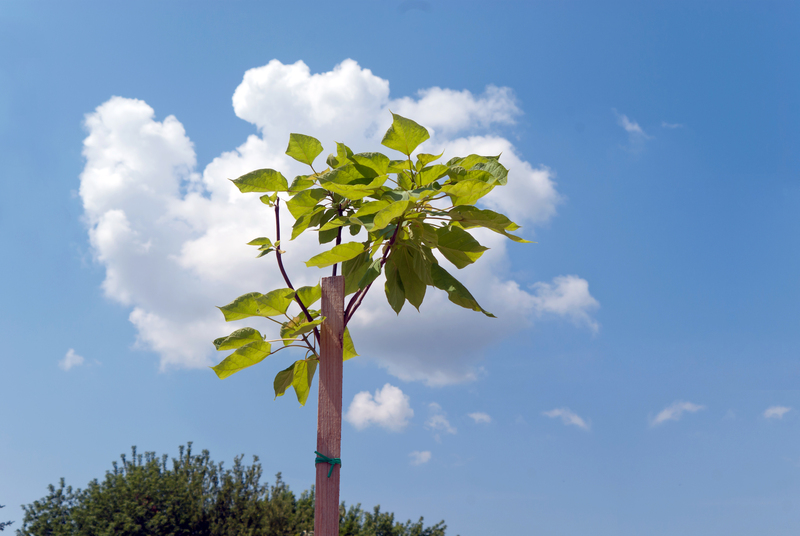Top Tips for Preventing Summer Drought Stress in Your Lawn
Summer brings bright sunny days, barbecues, and more time spent outdoors; but for your yard, it can mean intense heat and less rainfall, putting your lawn under drought stress. Prolonged periods of dry weather can cause grass to brown, thin, and ultimately die if not managed appropriately. In this comprehensive guide, you'll discover expert tips for preventing summer drought stress in your lawn, ensuring your turf remains lush, green, and healthy throughout the most challenging months.

Understanding Drought Stress in Lawns
Before learning the ways to avoid stress, it's crucial to understand what drought stress is and how it affects your grass. Drought stress occurs when water availability is significantly reduced, causing the grass to go dormant or, in severe cases, die off. Lawns exposed to drought conditions will often show:
- Browning or yellow patches in the turf
- Wilting blades of grass
- Visible footprints that don't spring back
- Slowed or halted growth
How Heat and Drought Impact Your Lawn's Health
Heat alone doesn't directly damage most turfgrass, but a combination of high temperatures and insufficient moisture will. Grass species like Kentucky bluegrass, perennial ryegrass, and fescues are particularly sensitive. Extended drought causes root systems to shrink, weakens the plant's immunity, and clears the way for weeds and pests to invade.
Ready to defend your yard? These key strategies for preventing summer drought stress in your lawn will be your best tools for maintaining a beautiful, resilient turf.
1. Choose Drought-Tolerant Grass Types
The most profound protection against drought stress starts at the grassroots level: selecting the right type of grass. Drought-tolerant species have deeper root systems and can endure extended dry spells with less water. Here are a few top picks:
- Bermuda grass - Thrives in intense sun and heat, with deep anchoring roots.
- Zoysia grass - Maintains color and density during drought periods.
- Tall fescue - Notably deep roots give it solid drought resistance.
- Buffalo grass - Extremely water efficient for warmer climates.
If you're planning a new lawn or considering overseeding, prioritize these varieties for improved lawn drought resistance.
2. Mow High and Mow Right
Proper mowing is one of the simplest ways to reduce summer drought stress. When you mow your lawn too short ("scalping"), you remove too much of the leaf blade, exposing the soil and increasing evaporation. Instead:
- Set your mower high - Aim for a mowing height of 3 to 4 inches during peak summer. Taller grass shades the soil, conserving moisture and encouraging deep root growth.
- Sharpen those blades - Dull mower blades tear grass, increasing moisture loss and disease susceptibility.
- Follow the one-third rule - Never cut more than one-third of the leaf blade in a single mow session.
A higher cut acts as natural mulch, keeping soil temperatures cooler and moisture-wicking roots safe.
3. Water Smart, Not Hard
A common mistake is watering lawns shallowly and often. To effectively prevent lawn drought stress, you should water deeply but infrequently, which fosters robust root development.
Watering Techniques for Drought Stress Prevention
- Early morning watering - Water before 10 a.m. to minimize evaporation and disease risk.
- Soak to the roots - Apply water slowly and deeply until the top 6-8 inches of soil are moistened. Most lawns need about 1 to 1.5 inches of water per week during dry spells.
- Check for runoff - If water starts running off, water in several short cycles to allow for absorption.
- Use a rain gauge or cup - Accurately monitor how much water is applied each week for optimal results.
Effective irrigation is vital for drought-proofing your lawn and minimizing water waste.
4. Mulch Grass Clippings for Extra Moisture
Instead of bagging grass when you mow, use a mulching mower to return clippings to your lawn. Grass clippings act as a natural mulch--they decompose and help:
- Retain soil moisture by reducing evaporation
- Add valuable nutrients back into the turf
- Shade the soil during the hottest days
This simple method can boost your lawn's drought resilience while cutting down on fertilizer demand!
5. Fertilize Carefully--Don't Overdo It
While fertilizing is crucial for lawn health, too much during summer heat can cause more harm than good. Overfertilization can burn grass, increase water demand, and make your turf more vulnerable to drought stress.
Fertilization Tips for Drought-Stressed Lawns
- Fertilize in spring and fall - Avoid heavy summer feeding when your lawn is most vulnerable.
- Use slow-release fertilizer - This provides steady nourishment without overstimulating growth.
- Skip fertilization if your lawn is dormant - Wait for cooler weather and rainfall before feeding drought-stressed turf.
Keep nutrition in balance for a hardy, drought-tolerant lawn.
6. Aerate Your Lawn for Deeper Root Growth
Compacted soil blocks water penetration and stifles root growth, making grass more susceptible to dry conditions. Aeration--removing small plugs of soil from the lawn--allows water, nutrients, and oxygen to reach the root zone.
- Aerate in spring or early fall for cool-season grasses, late spring for warm-season lawns.
- Focus on high-traffic areas where compaction is worse.
- Follow up with overseeding and compost top-dressing for maximum resilience.
Aeration is one of the best secrets for preventing drought stress on your lawn. It promotes vigorous, deep roots that can access water even during hot, dry spells.
7. Apply Organic Topdressing for Improved Moisture Retention
Adding a light layer of organic matter--such as compost or well-rotted manure--traps moisture, cools roots, and improves soil structure over time. This can make a big difference when summer is at its driest.
- Spread about 1/4 inch of compost evenly across the turf
- Water-in to help materials filter down to the root zone
- Repeat annually for best results
Healthy soil supports deeper roots, leading to lasting drought tolerance.
8. Manage Weeds Aggressively
Weeds compete fiercely with your grass for precious water, nutrients, and sunlight, and can severely stress your lawn during drought. Here's how to keep them in check:
- Spot treat problem areas with eco-safe herbicides
- Manually remove weeds before they go to seed
- Keep your lawn dense and healthy, which naturally crowds out invaders
A weed-free lawn uses every drop of water to nurture grass, not unwanted guests.
9. Don't Forget About Shade & Foot Traffic
Lawn areas exposed to constant sun may dry out faster, but areas under heavy shade or where people and pets regularly walk can also feel the pinch. Minimize drought stress by:
- Reducing mowing frequency in shady or worn-out spots
- Adding stepping stones to redirect foot traffic
- Giving shaded grass a bit less water than sunny spots, as it dries out slower
Managing traffic and shade will encourage grass to grow stronger and resist drought-related wear.
10. Know When to Give Your Lawn a Break
Despite the best efforts, sometimes the best thing you can do is let your lawn go dormant during prolonged summer drought. Dormancy is a natural survival mechanism--grass turns brown as it conserves energy and reduces growth until better conditions return.
- Don't fertilize or overwater a dormant lawn-wait for rain and cooler weather
- Continue to water lightly every 3-4 weeks to keep roots alive, but don't try to "force" green color
- Limit activity on dormant lawns to prevent damage
When rains resume, resume normal care and allow your lawn to green up naturally.
Bonus Tips for Preventing Drought Stress in Lawns
Beyond the essential techniques above, consider these bonus strategies for making your yard even more drought-resilient:
- Install smart irrigation controllers that adjust watering based on local weather forecasts
- Maintain your irrigation system to avoid leaks, broken heads, or poor coverage
- Landscape with native plants around lawn edges to create attractive, water-saving beds
- Rethink your lawn size--reduce turf in hard-to-water or less-used areas in favor of mulched beds or groundcovers
*With these advanced strategies, your lawn can withstand even the toughest summer drought stress.*

Frequently Asked Questions About Lawn Drought Stress Prevention
What is the best time to water my lawn during drought?
Early morning (between 5-10 a.m.) is ideal. Watering at this time reduces evaporation and prepares grass to face midday heat.
How much should I water during a summer drought?
Aim for 1 to 1.5 inches of water per week, adjusting for rainfall. Water deeply and less frequently rather than shallow, daily watering.
Is brown grass during summer dead?
Not necessarily! Browning often means grass is dormant, not dead. Once cooler, wetter weather returns, your lawn should recover.
Conclusion: Achieve a Healthy, Drought-Proof Summer Lawn
Preventing summer drought stress in your yard isn't about miracle products or intensive labor--it's about smart management, timing, and good cultural practices. By following the expert tips outlined in this article, you'll create a lawn resilient to drought and heat--and enjoyable for family fun all season.
- Choose drought-resistant grasses
- Mow high and properly
- Water deeply and efficiently
- Feed carefully and only when appropriate
- Aerate and topdress for healthy roots
- Control weeds and protect high-traffic zones
- Let the grass rest if dormancy sets in
*With care and attention, you can prevent drought stress and relax knowing your lawn will look its best--no matter how dry the summer gets!*